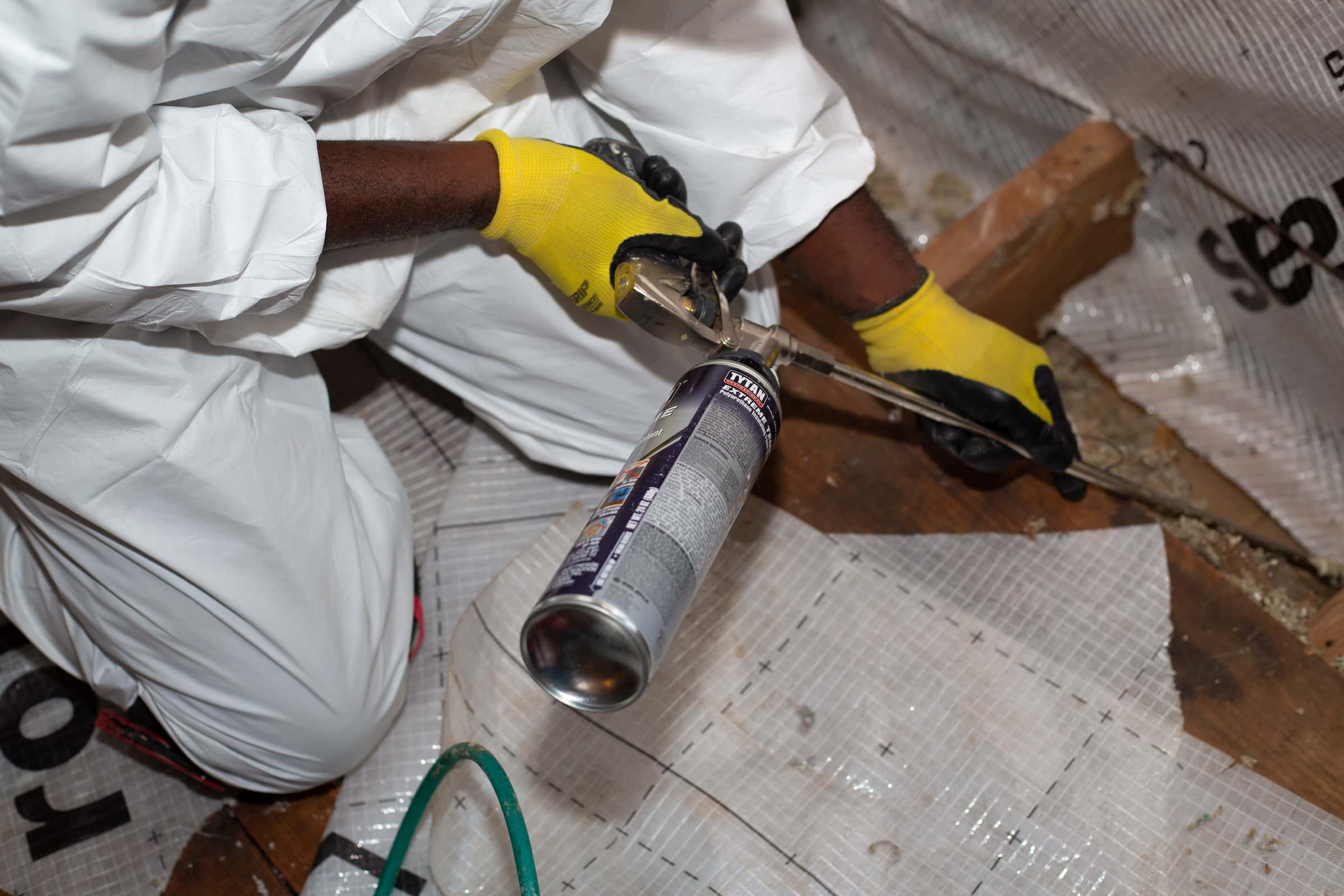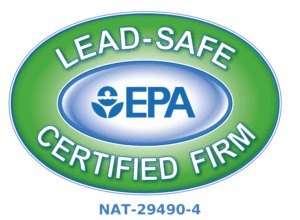You Can’t Fix What You Can’t See
It’s frustrating when your home just doesn’t feel right – and you can’t figure out why. Thermal imaging helps take the guesswork out of home comfort issues by showing what’s happening behind the scenes.
At Evergreen, we often use infrared thermal cameras during the blower door testing part of our home energy audits to detect where your home is losing heat, leaking air, or under-insulated. It’s like getting X-ray vision for your home’s energy performance.
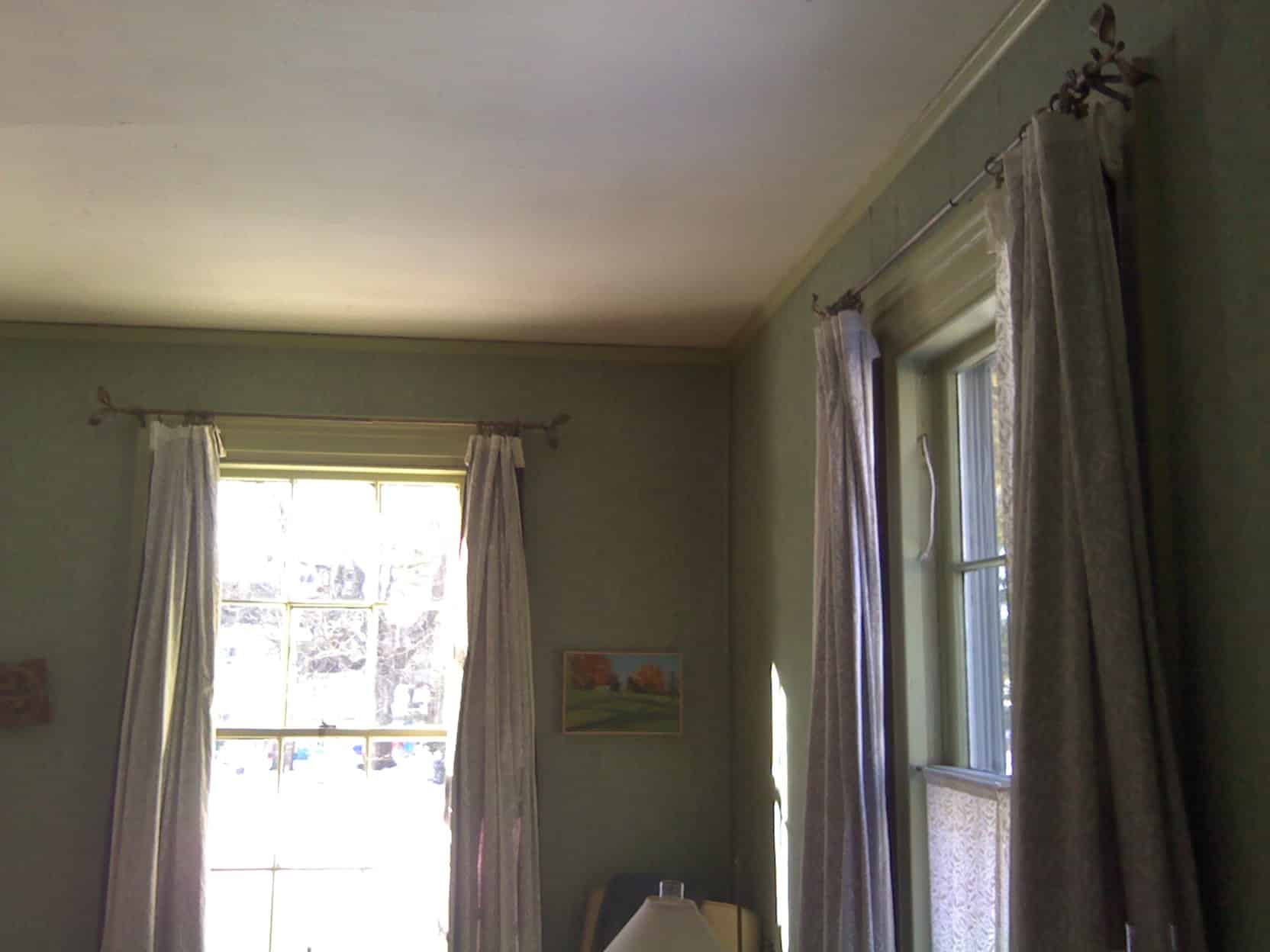
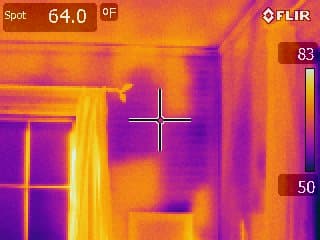
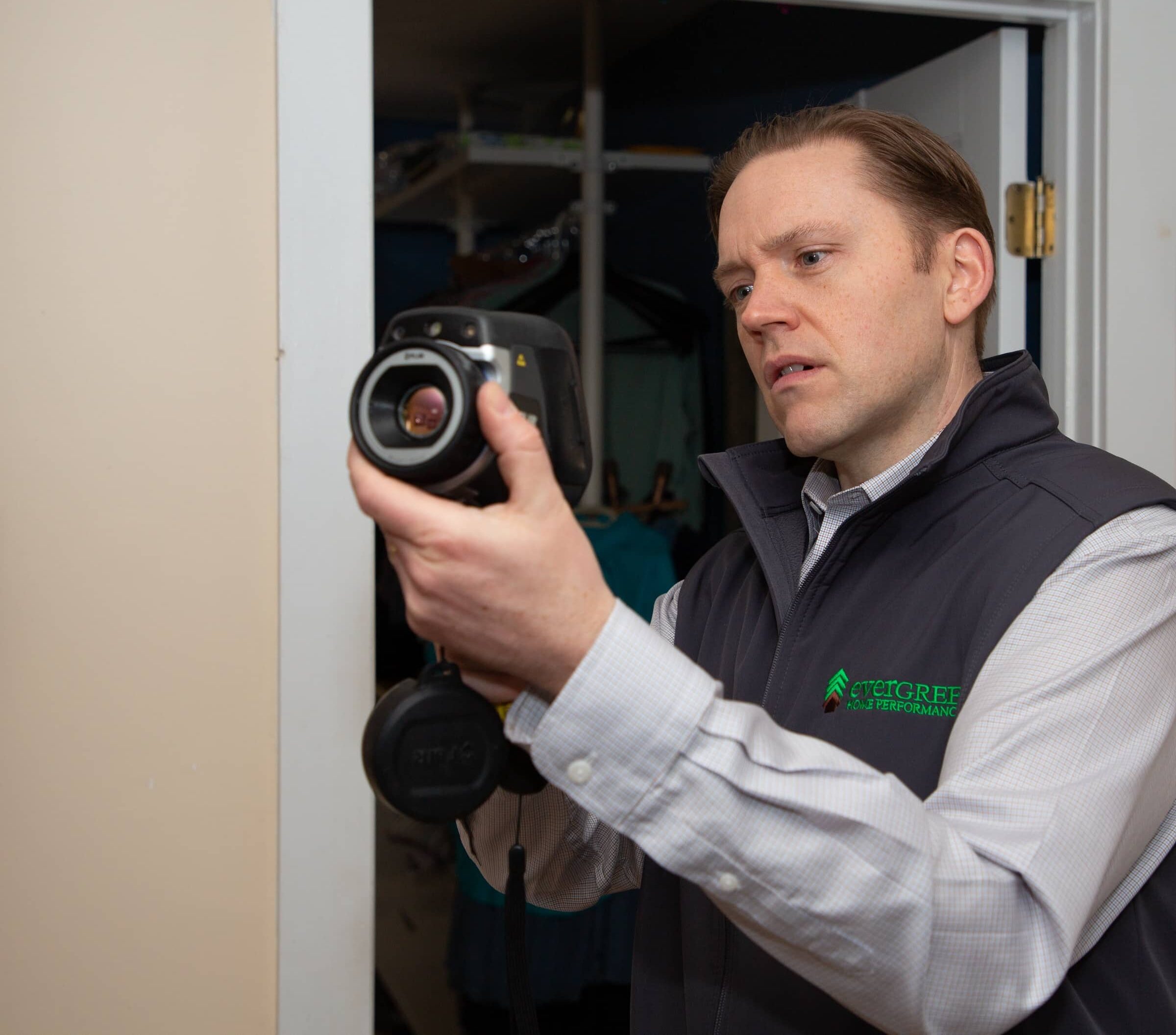
How Our Thermal Imaging Services Work
Every surface in your home gives off heat – but our eyes can’t see it. A thermal camera reveals temperature differences across walls, ceilings, windows, and more, helping us detect where insulation is missing or where outside air is sneaking in.
Thermal imaging is frequently bundled with blower door testing because pressurizing the air in your house makes the temperature changes in rooms more obvious as different air is drawn into them, making it easier for us to “see” leaks with the camera.
Depending on the season, we interpret these thermal images differently:
- In winter, we look for cold spots (blue or green) that show where heat is escaping
- In summer, we look for warm areas (red, orange, or yellow) where unwanted heat is getting in from the outside or cold spots that point to leaks from your basement or crawlspace
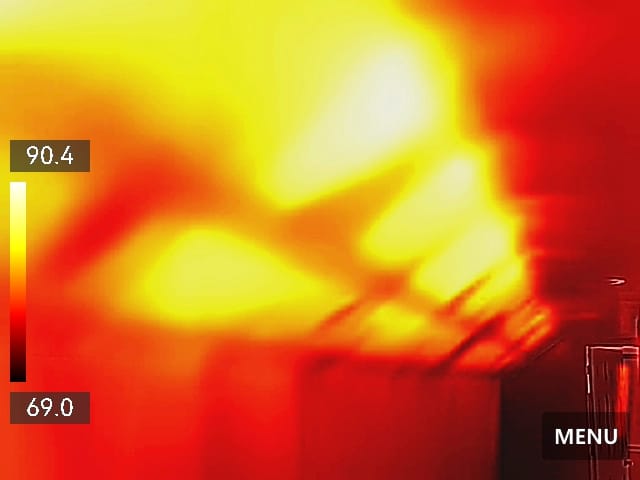
What Thermal Imaging Helps Reveal
Air Leaks You Can’t See
Sudden temperature changes in specific areas during the course of blower door testing often mean hidden gaps in framing, plumbing chases, or roof construction. With this info, we target air sealing where it’s needed most.
Attic & Basement Insulation Gaps
Thermal scans show where heat is slipping through the cracks in your home’s most vulnerable areas—like rim joists, crawlspaces, or floorboards.
Damaged or Missing Wall Insulation
We can’t open up your walls—but a thermal camera shows whether insulation is really there, how well it’s performing, and whether upgrades are needed.
Leaky Window Frames
A visual inspection may not reveal poor window installation, but thermal imaging can show where air is sneaking in around the frame.
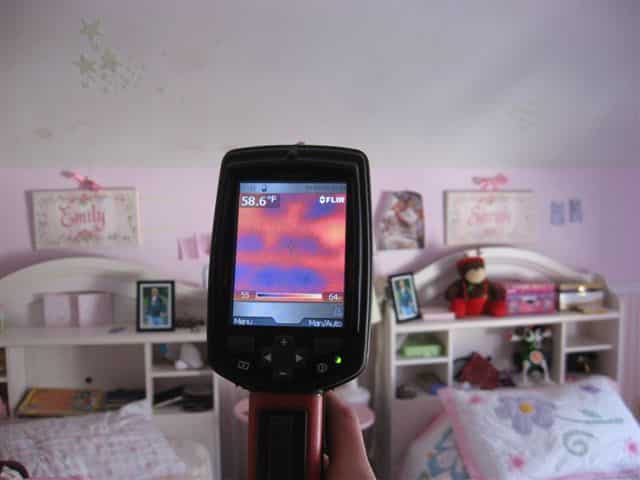
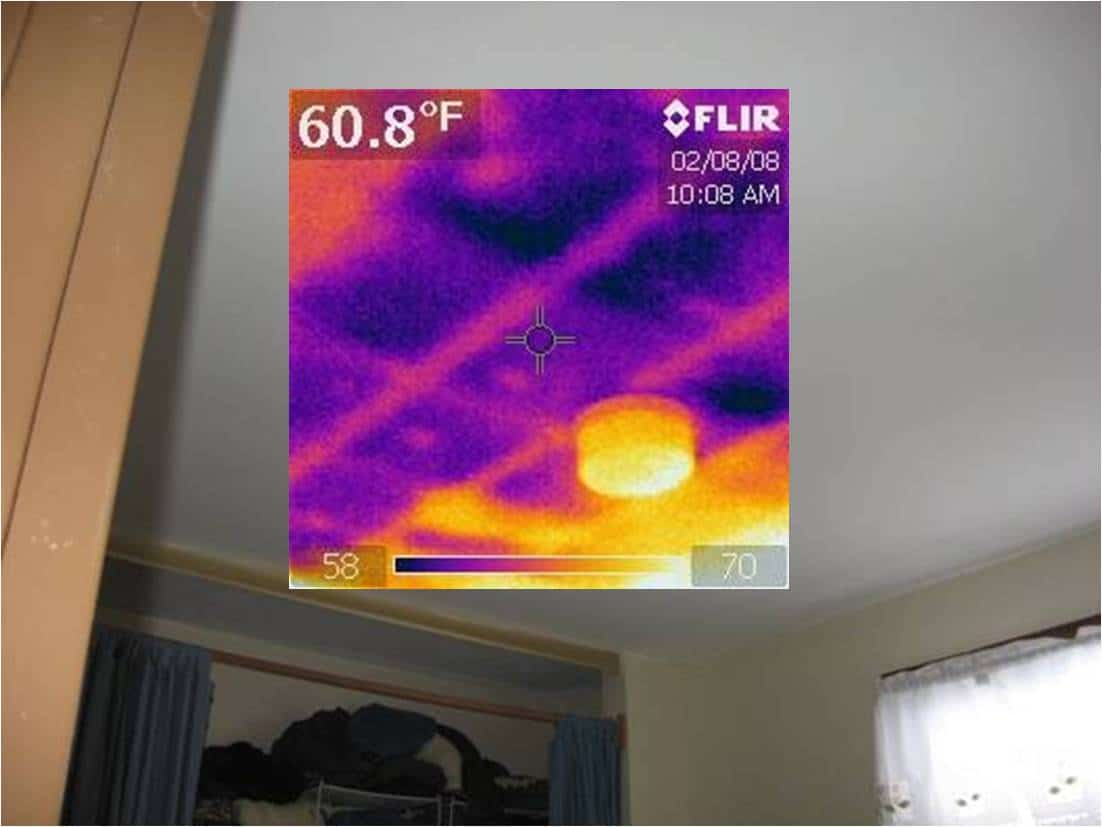
When Thermal Imaging Works Best
Because thermal imaging depends on temperature differences, when it’s close to the same temperature inside and outside your home, our cameras can’t “see” much.
Most homes don’t really need extensive thermal imaging diagnostics to get at the root of the problems, but some do and it can be helpful to schedule inspections during times that optimize temperature difference. For example, on a late spring morning, we’ll ask you to turn on the heat and make your home toasty. Or we’ll schedule for later in the afternoon on a sunny day to allow your attic to heat up.
Why We Use Thermal Imaging at Evergreen
We don’t guess—we measure. That’s what sets Evergreen apart. Thermal imaging is part of our whole-home diagnostic approach, helping us:
- Design smarter insulation and air sealing upgrades
- Confirm where energy waste is happening
- Avoid unnecessary or misdirected work
- Make sure your comfort and efficiency issues get solved the first time
We combine thermal imaging with tools like blower door testing to provide the most complete understanding of your home’s performance.
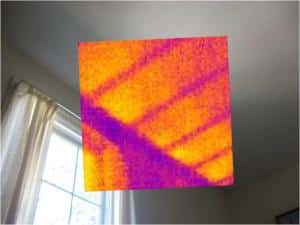
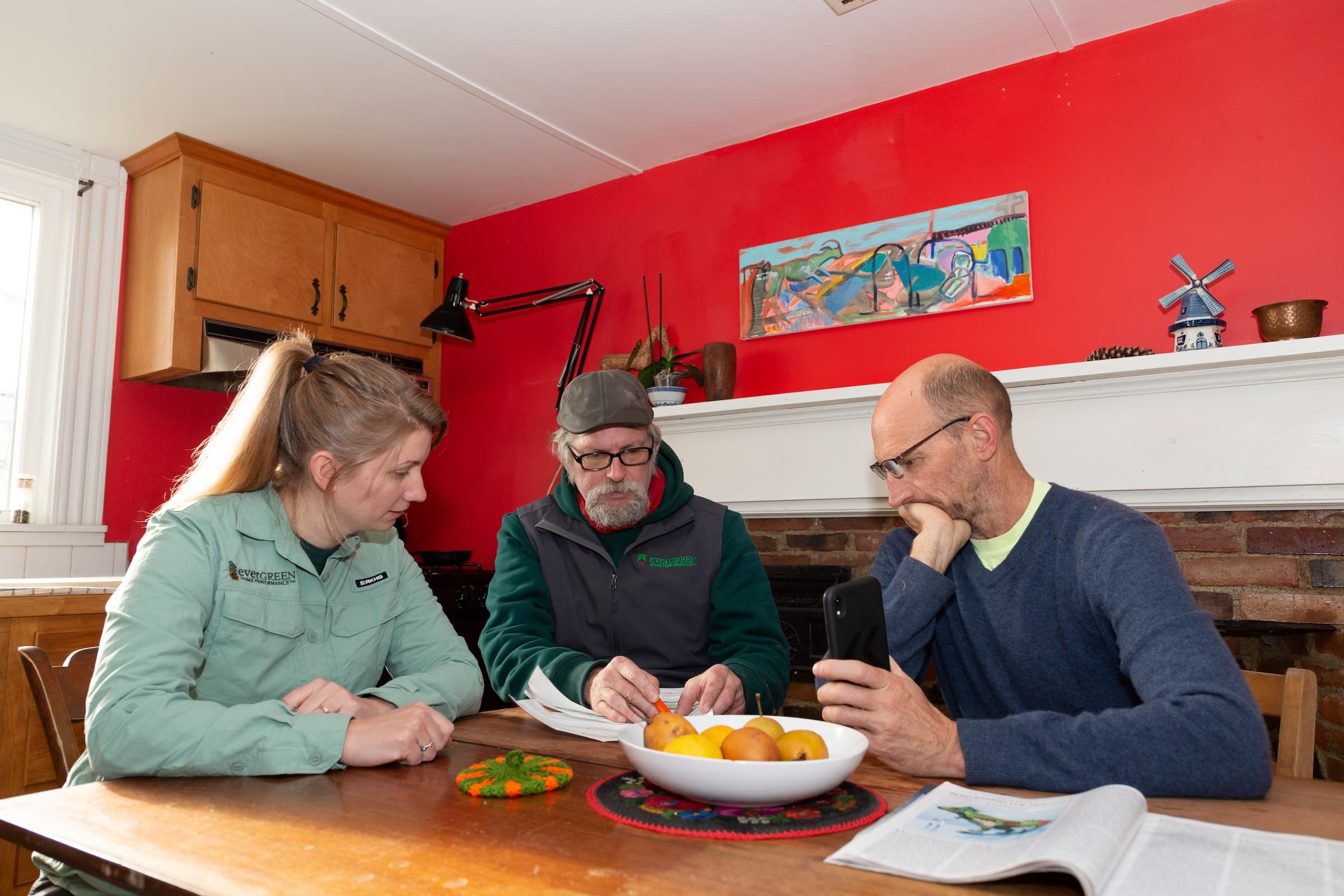
Your Home, Your Plan, Backed by Data
At Evergreen, we don’t just look at symptoms—we get to the source. Your energy audit includes diagnostics like a thermal energy inspection for your Portland or Rockland home. We’ll show you the data, walk you through the results, and guide you through the next steps.
